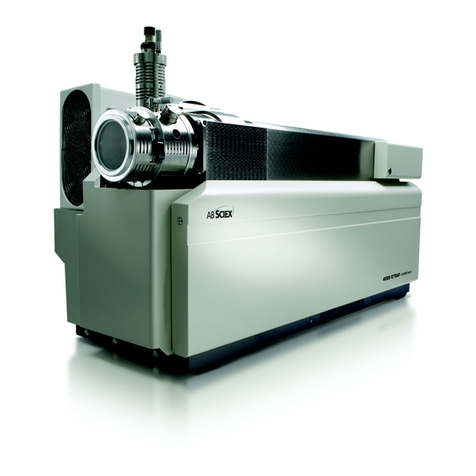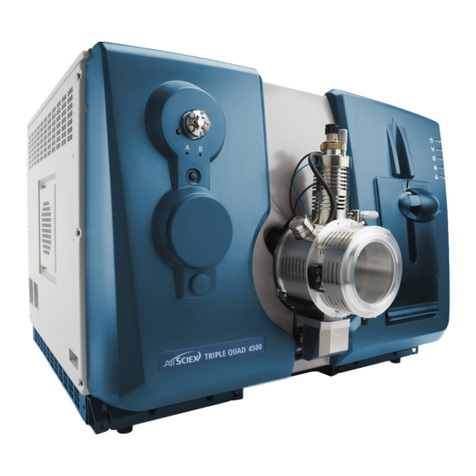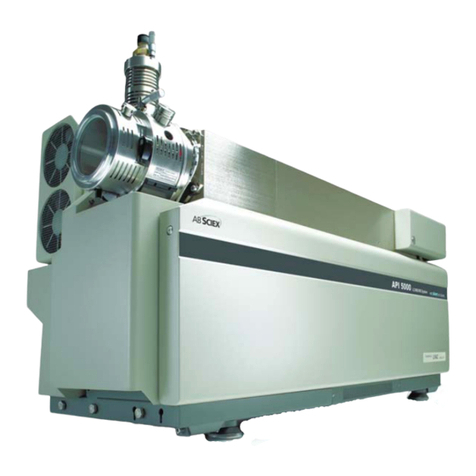
System Overview
6 Document Number: D1000092204 B
Principles of the System
This section describes features and applications of the API 3200™ LC/MS/MS
system.
Applications for the System
The API 3200 system is designed for quantitative analysis of small molecules.
This application involves measurement of specific molecular weight compounds,
usually a drug or metabolite in a liquid sample, and their resulting fragment ions
for determining the exact quantity of the compound in the sample of interest.
Quantitation is performed using a standard curve of mass spectrometer signal
intensity for various known concentrations of the compound. The signal in the
test sample is then compared to the standard curve to determine the
concentration.
The typical scan type used for this application is MRM (Multiple Reaction
Monitoring).
Features of the Instrument
The API 3200 system is a benchtop triple quadrupole mass spectrometer for
sensitive quantitative analyses of biomolecules found in a wide variety of
biological matrices. It has the following features:
•The standard Turbo V™ ion source provides a plug-and-play
TurboIonSpray®probe and APCI probe, a durable ceramic interface, and
compatibility with high flow rates.
•LINAC®collision cell eliminates cross-talk and allows for multi-component
analysis during an LC run.
•Rugged Curtain Gas™ interface technology combined with improved gas
dynamics reduces maintenance and increases uptime.
•Scanning in a mass range of m/z 5–1800.
•Integrated switching valve and integrated syringe pump provide
convenient sample introduction flexibility.
•Additional compatible sources, including the DuoSpray™ ion source,
PhotoSpray®ion source, and NanoSpray®III ion source components,
provide further flexibility.
•IDA (Information Dependent Acquisition) maximizes the amount of
information that can be acquired in an LC scan.
•Compatible with additional software packages, such as Metabolite ID
software, Automaton software, BioAnalyst™ software, and more.
How the Instrument Works
The API 3200 mass spectrometer has a series of quadrupole filters that transmit
ions according to their m/z (mass-to-charge ratios). Ions entering the ion path are
first focused by Q0 before passing into Q1.
Q1 is a filtering quadrupole that sorts the ions before they enter Q2, a LINAC
collision cell in which ions can be broken into fragments by collisions with gas
molecules. This technique allows for the design of experiments that measure the
m/z of product ions to determine the composition of the parent ions. After
































